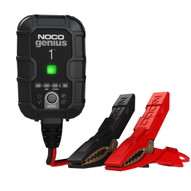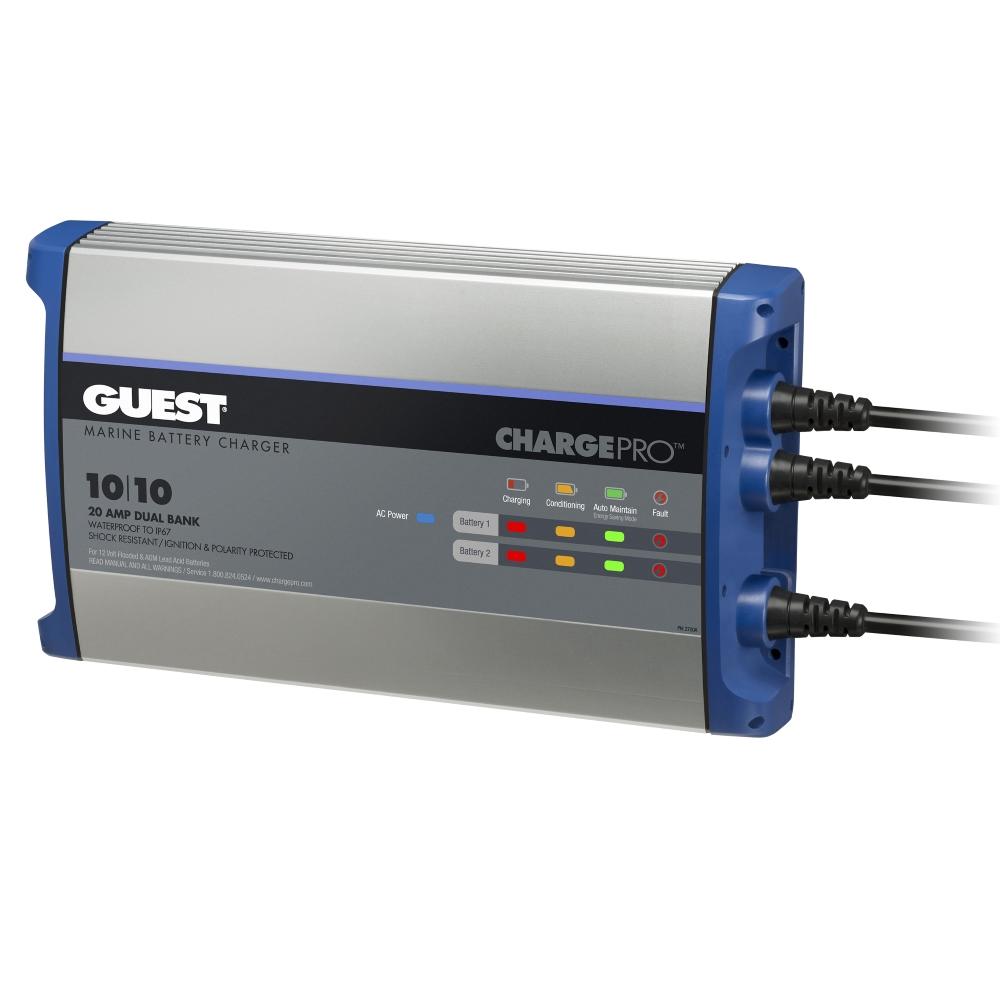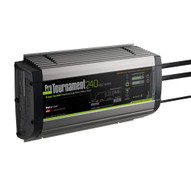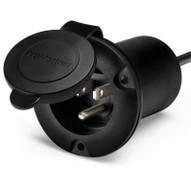There are many factors and requirements for chargers for boat owners. I’m going to touch on a few examples in this article including, in-water boats, trailer boats, and stored boats. Its frustrating to have your whole family there ready to go out on the boat for the first time and have a dead marine battery. I’ll cover from simple solutions to a sure fire way that your battery in the boat will have a full charge!
First, I’ll list the things you need to start, then I’ll explain which chargers work for your situation.
Chargers for small boats that do not stay in wet slips
- Smart-Battery-Charger 1 amp battery charger, non hard wired. This charger can clip on the battery or be hardwired to the battery
- Smart-Battery-Charger 5 Amp Battery Charger, non hard wired. This charger can clip on the battery or be hardwired to the battery

Chargers for small/mid sized boats stored in wet slips


- CHARGER-20A-12V-2-BANK 20 amp 2 bank
- ProMariner-ProTournament-Marine-Battery-Charger-24-Amp 24 amp 2 bank
When storing your boat during winter, it’s crucial to maintain your batteries whether they’re in the water or not. This will save you time and money in the future. Invest in a charger that suits your needs to avoid expensive downtime and repair costs caused by a dead boat battery.
I’m going to cover a few reasons for needing an on board charger before we get into the installation process. If your boat is not in use during winter, it’s not crucial to maintain the batteries. However, you wouldn’t want to prepare your boat for spring only to realize that you need to buy expensive new batteries.
If your boat stays in the water all winter it is vital that you have an onboard charger.
Many forget about their boat in the off season, but suddenly want to use it when spring arrives. I won’t say don’t check your boat in the off season, but having a battery charger can prevent accidents. If your boat starts taking on water, the bilge pump will only work until the battery dies. If the boat has been idle for a long time, it’s uncertain how much the battery has lost its charge.
With an onboard charger you will always have a fully charged battery/batteries. Therefore, your bilge pump can keep doing its job until you find and repair the leak. I will get into the process of walking through how to install a battery charger in your boat.
For boats on trailers or in storage with power, use a 1 amp or 5 amp trickle charger. You can maintain your battery throughout the winter months this way. This is a smart charger which means it will charge when needed and apply the needed load from the charger just to maintain the battery without damaging or over charging it.
You can install this charger in two ways. There are two ways to install this charger. One way is to use the alligator clips, which can be clipped onto the battery terminal.
You can use the lug terminals, which you can mount to the battery post, as another option. The lug connections have a quick connect so you can leave them mounted to the battery all the time.
For small/mid sized boats stored in wet slips you will want to select one of our hard install battery chargers with amp ranges from 20 to 24 amps. These chargers are smart and adjust the charging rate to match the battery’s needs.
If your battery only needs a small charge, it may only give 2 amps to the battery for maintenance. If it is trying to pump water out of the boat and it detects that the battery is draining constantly it will apply the whole 20 to 24 amps based on your charger selection.
For the install of this you want to locate a suitable place close to the batteries to mount the charger. Run the wires for each bank to each battery. These charger leads will have lugs on the to mount straight to the battery posts. I advise installing a through plug for the cord.
I will list the option we have below. That way you don’t have to run a drop cord under a seat or through a hatch and risk a short by pinching the wires. After that you need to just plug it in and let it do its job!
The plug-holder keeps the charger cord in place and goes through the hull for easy connection of a drop cord. You need to drill a 1 7/8″ hole for mounting.

In conclusion, consider integrating a charger into you boats 12V system. It will save you time and money